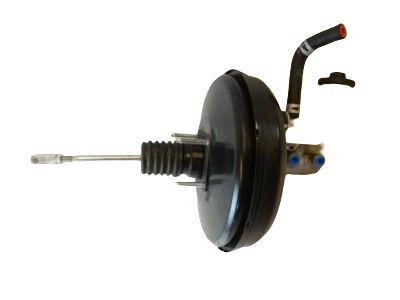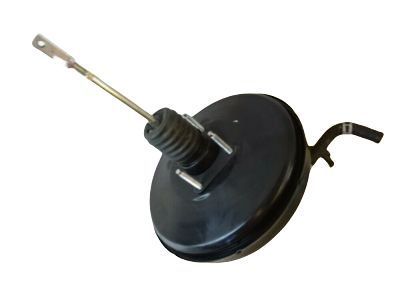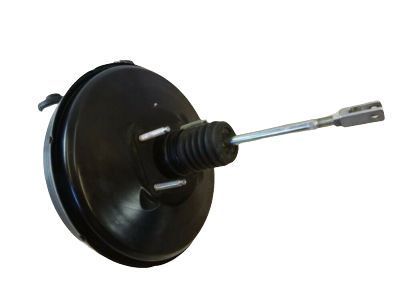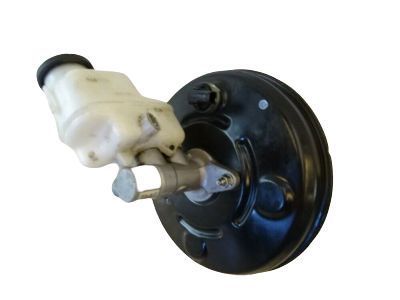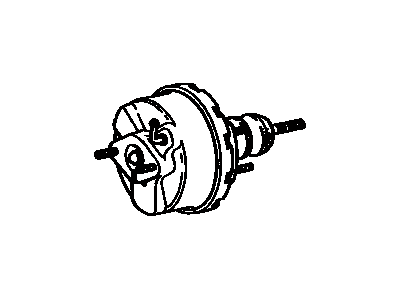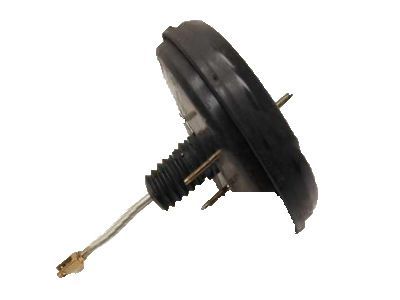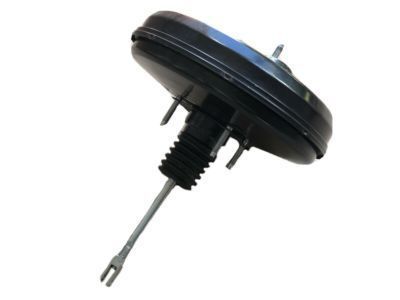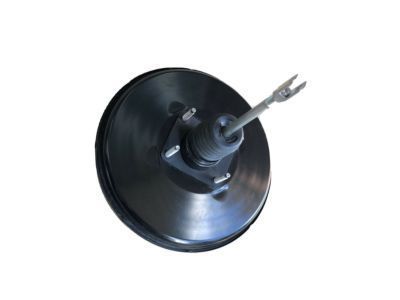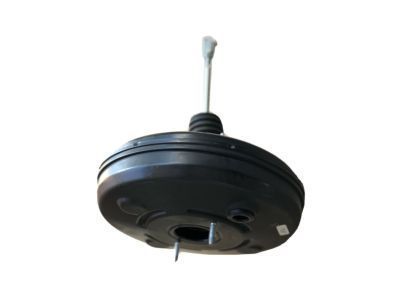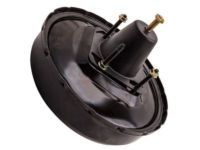

My Garage
My Account
Cart
Genuine Toyota Tacoma Brake Booster
Brake Power Booster- Select Vehicle by Model
- Select Vehicle by VIN
Select Vehicle by Model
orMake
Model
Year
Select Vehicle by VIN
For the most accurate results, select vehicle by your VIN (Vehicle Identification Number).
20 Brake Boosters found
Toyota Tacoma Brake Booster Assembly
Part Number: 44610-04210$588.96 MSRP: $879.40You Save: $290.44 (34%)Ships in 1-2 Business DaysToyota Tacoma Brake Booster Assembly
Part Number: 44610-04150$749.15 MSRP: $1118.59You Save: $369.44 (34%)Ships in 1-3 Business DaysToyota Tacoma Brake Booster Assembly
Part Number: 44610-04182$582.05 MSRP: $869.09You Save: $287.04 (34%)Ships in 1-3 Business DaysToyota Tacoma Brake Booster Assembly
Part Number: 44610-04190$642.10 MSRP: $958.74You Save: $316.64 (34%)Ships in 1-3 Business DaysToyota Tacoma Brake Booster Assembly
Part Number: 44610-04220$582.05 MSRP: $869.09You Save: $287.04 (34%)Ships in 1-3 Business DaysToyota Tacoma Brake Booster Assembly
Part Number: 44610-04161$655.02 MSRP: $978.04You Save: $323.02 (34%)Ships in 1-3 Business DaysToyota Tacoma Brake Booster Assembly
Part Number: 44610-04162$655.02 MSRP: $978.04You Save: $323.02 (34%)Ships in 1-3 Business DaysToyota Tacoma Brake Booster Assembly
Part Number: 44610-04181$582.05 MSRP: $869.09You Save: $287.04 (34%)Ships in 1-3 Business DaysToyota Tacoma BOOSTER ASSY, BRAKE
Part Number: 44610-AK010$586.40 MSRP: $875.57You Save: $289.17 (34%)Ships in 1-2 Business DaysToyota Tacoma Brake Booster Assembly
Part Number: 44610-04151$749.15 MSRP: $1118.59You Save: $369.44 (34%)Ships in 1-3 Business DaysToyota Tacoma Brake Booster Assembly
Part Number: 44610-04160$655.02 MSRP: $978.04You Save: $323.02 (34%)Ships in 1-3 Business DaysToyota Tacoma Brake Booster Assembly
Part Number: 44610-04171$582.05 MSRP: $869.09You Save: $287.04 (34%)Ships in 1-3 Business DaysToyota Tacoma BOOSTER ASSY, BRAKE
Part Number: 44610-AK030$611.80 MSRP: $913.50You Save: $301.70 (34%)Ships in 1-2 Business Days
Toyota Tacoma Brake Booster
The Brake Booster as a component in Toyota Tacoma automobiles is responsible for the ability to minimize the force needed to apply a brake. In this case, the brake booster takes advantage of a vacuum chamber to increase the hydraulic pressure supplied by the master cylinder; hence, increasing the force that is applied by the driver whenever he steps on the brake pedal. It is crucial in the brake system of the vehicle and it facilitates easier and efficient braking hence its development. Through the application of a vacuum servo within the brake booster, the pressure required by the driver to apply the brakes is reduced hence improving the braking system of the Toyota Tacoma.
If you are in demand for superior quality and affordable OEM Toyota Tacoma Brake Booster, then shop with us! We own a wide range of the reduced-priced genuine Toyota Tacoma Brake Booster. You can purchase in confidence as all parts come with a manufacturer's warranty. Any issues with our products? No need to worry as we have a hassle-free return policy to guide you every step of the way.
Toyota Tacoma Brake Booster Parts Questions & Experts Answers
- Q: How to maintain and replace a power brake booster unit on 1995 through 2004 Toyota Tacoma?A:First, the brake pedal should be depressed multiple times with the engine off, and then with the engine on, and if the pedal goes down slightly, the operation is fine. The airtightness of the booster can be checked by starting the engine and turning it off, then depressing the brake pedal and if it depresses less, the booster is airtight. The process of removing a new power brake booster unit involves detaching the vacuum hose, removing the nuts linking the master cylinder, the power brake pushrod, the nuts attaching the booster to the firewall, and carefully pulling the unit out. Also, the new unit should be installed by tightening the nuts, attaching the brake pedal and the return spring, checking the pushrod clearance, installing the Brake Master Cylinder, reattaching the vacuum hose, adjusting the brake pedal height and free play, and testing the brakes.
- Q: How to check and replace a power brake booster on 2005 through 2009 Toyota Tacoma?A:To ensure the proper functioning of your power brake booster and maintain air tightness in the system, follow these operating and air tightness check procedures. Depress the brake pedal multiple times with the engine off and confirm that there is no change in the pedal reserve distance. Then, depress the pedal and start the engine. If the pedal slightly goes down, the operation is considered normal. For the air tightness check, start the engine and turn it off after a short duration, while slowly depressing the brake pedal several times. If the pedal depresses less with each depression, it indicates an airtight booster. Alternatively, depress the brake pedal while the engine is running and stop the engine while keeping the pedal depressed. If there is no change in the pedal reserve travel after holding it for 30 seconds, the booster is airtight. When it comes to removal, it is important to note that power brake booster units should not be disassembled, as they require special tools. It is recommended to replace the booster with a new or rebuilt one due to its critical role in brake performance. Start by disconnecting the vacuum hose from the booster, being careful not to damage the vacuum check valve or the hose. Then, remove the Brake Master Cylinder and the left side lower finish panel (knee bolster) from the instrument panel. Detach the pushrod from the brake pedal lever by removing the clevis. Use pliers to remove the clevis pin retaining clip and pull out the pin. Proceed to remove the four nuts securing the brake booster to the firewall, ensuring proper visibility, and slide the booster straight out from the firewall until the studs clear the holes. For installation, follow the reverse order of the removal procedures. Install a new gasket and tighten the clevis locknut securely if it was loosened or removed. Tighten the booster mounting nuts according to the torque specifications. If a new power brake booster unit is being installed, check the pushrod clearance by measuring several dimensions. Compare the calculated pushrod clearance to the specified specifications and adjust the pushrod length if necessary. After the final installation of the master cylinder and Brake Lines, bleed the system and check the brake pedal height and free play. Lastly, carefully test the operation of the brakes before returning the vehicle to normal operation.
Related Toyota Tacoma Parts
Browse by Year
2025 Brake Booster 2024 Brake Booster 2023 Brake Booster 2022 Brake Booster 2021 Brake Booster 2020 Brake Booster 2019 Brake Booster 2018 Brake Booster 2017 Brake Booster 2016 Brake Booster 2015 Brake Booster 2014 Brake Booster 2013 Brake Booster 2012 Brake Booster 2011 Brake Booster 2010 Brake Booster 2009 Brake Booster 2008 Brake Booster 2007 Brake Booster 2006 Brake Booster 2005 Brake Booster 2004 Brake Booster 2003 Brake Booster 2002 Brake Booster 2001 Brake Booster 2000 Brake Booster 1999 Brake Booster 1998 Brake Booster 1997 Brake Booster 1996 Brake Booster 1995 Brake Booster
